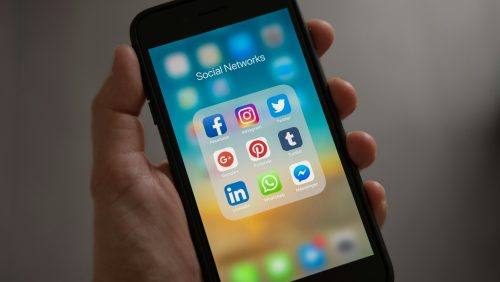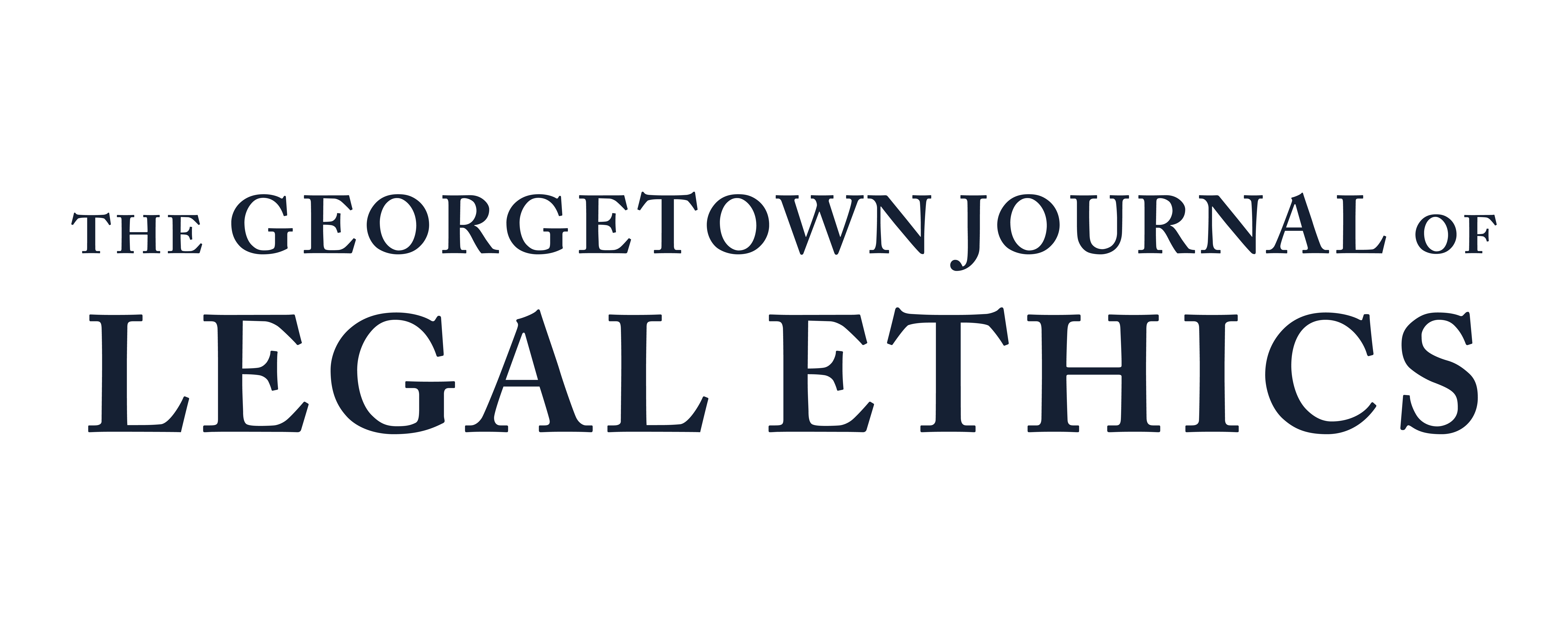Social Media Use by Legal Professionals
March 7, 2025 by Hyungi Lee

Introduction
The rise of social media has transformed how individuals and professionals communicate, connect, and share information. Judges and lawyers, as critical stewards of the legal system, are not exempt from this digital revolution. Legal professionals have a strong incentive to use social media, as it can be a powerful tool for marketing, research, and client engagement.[1] However, their presence on platforms like LinkedIn, X (formerly Twitter), and Facebook raises significant ethical questions. For example, can an attorney’s casual comment on a trending topic be misconstrued as legal advice or a breach of confidentiality? What are the implications when an attorney is ‘friends’ with the judge presiding over their case?
This post provides a general overview of the ethical obligations and considerations for judges and lawyers in the digital age, focusing on how social media impact confidentiality, advertising, client engagement, and peer interactions. It also raises concerns about misleading advertisements, solicitation, and judicial impartiality.
General Obligations
The ABA Commission on Ethics 20/20 was established in 2009 to review the impact of technological advances on ethical and regulatory challenges faced by lawyers.[2] It’s initial recommendations address when electronic communications create an attorney-client relationship, which client development tools lawyers can utilize, and the circumstances under which online communications qualify as “solicitations.”[3] Some criticize this clarification as insufficient to address the complex ethical issues surrounding social media use by legal professionals. However, along with the ABA Model Rules, state bar ethics opinions, and various studies, it provides substantial guidance on the professional obligations of legal professionals when using social media.
Confidentiality
One of the main concerns involving social media use by legal professionals is the violation of their confidentiality obligations. Attorneys have a duty under Model Rule 1.6 to protect all information relating to the representation of a client, regardless of its source.[4] Sharing even seemingly harmless details online, such as a vague description of a case or a celebratory post about a successful outcome, can inadvertently reveal confidential information or allow others to identify a client or case details.
For instance, the New York State Bar Association’s Attorney Professionalism Forum addressed a complaint regarding a judge’s YouTube post discussing a pending case, stating that “[d]isguising names of the parties in an apparent attempt to preserve confidentiality does not save the day.”[5] This is because, even when names and specific identifiers are omitted, the context and details shared online can still reveal the identities of the parties involved, especially in high-profile or contentious cases.[6] Thus, legal professionals must exercise extreme caution when using social media, ensuring that no information shared could be traced back to a client or case.
Advertisement and Marketing
The use of social media platforms for advertising and marketing has become increasingly essential for lawyers and law firms.[7] Lawyers must also be mindful that private communications can often be seen as public advertisements.[8]
Certain Model Rules have more straight-forward applications to social media use than others. For example, Model Rule 5.5(b)(2) prohibits lawyers from misleading the public into believing that they are allowed to practice law in a jurisdiction where they are not licensed.[9] Social media platforms, with their global reach, have made this rule more relevant than ever. A lawyer posting legal advice on a public forum might unintentionally create the impression that they are authorized to practice law in every jurisdiction where their post is visible. This can lead to ethical violations and potential disciplinary action.
Similarly, Model Rule 7.1 prohibits lawyers from making false or misleading statements about their services.[10] On social media, this can encompass exaggerated claims about case results, client testimonials, or their capabilities, such as claims that they “never lose cases” or vague statements that could confuse the public about the scope of a lawyer’s expertise. However, due to the nature of social media, it may sometimes be impossible to strictly comply with these rules.[11] The ABA Commission made a few changes, such as clarifying the definition of “recommendation” of lawyer’s services, to address some remaining ambiguities,[12] although it does not sufficiently answer all the questions regarding social media use for advertising.[13]
Client Engagement
Social media has opened new avenues for lawyers to engage with current and prospective clients, but it also presents ethical challenges under the rules governing solicitation and communication.[14] Model Rule 7.3 governs the direct solicitation of clients, restricting in-person, live telephone, or real-time electronic contact with prospective clients for the purpose of obtaining professional employment, unless certain exceptions apply.[15] Social media complicates this rule, as interactions on these platforms often blur the line between permissible indirect engagement and impermissible solicitation.
For example, posting general legal updates or insights on a public platform like LinkedIn is typically acceptable, as it falls under informational content rather than targeted solicitation. However, sending direct messages to individuals who are not already clients, particularly those in vulnerable situations, could be viewed as a violation of Rule 7.3 unless the individual has expressed an interest in legal services. Attorneys must exercise caution to ensure their outreach remains educational rather than promotional or coercive.
Direct engagement with represented parties is prohibited under Model Rule 4.2.[16] However, what if a represented party shares a publicly available social media post? Reading such a post likely does not violate the rule, as its public nature aligns with passive forms of information gathering, akin to reading a magazine or newspaper. The Oregon State Bar Association supports this interpretation, emphasizing that simply viewing publicly accessible content does not constitute direct engagement.[17] However, the opinion cautions that any action requiring interaction with the represented party to gain access—such as sending a friend request—would cross the line and violate the rule.[18]
Peer Interaction and Professional Community
Impartiality is essential for ensuring a fair judicial proceeding, as emphasized by Model Rule 2.4, which governs a judge’s duty to avoid conflicts of interest.[19] Social media has been used increasingly to share trending legal issues, research, and professional updates, fostering broader conversations within the legal community and enhancing public understanding of the law. However, for judges and legal professionals, these interactions must be carefully managed to avoid any appearance of bias or improper influence.
So far, only a limited number of judicial ethics commissions have addressed this issue, and the existing opinions offer neither clear guidance nor a unified stance.[20] For example, while one Kentucky judicial ethics opinion allows judges, attorneys, and other legal professionals to be friends on social media,[21] one Florida opinion does not.[22] The general approach appears to allow legal professionals to engage with one another on social media, provided that these interactions do not suggest bias, favoritism, or an improper relationship.[23] But some opinions warned that if the relationship between a judge and an attorney arises to the level of a “close social relationship,” this must be disclosed to the opposing counsel, or the judge must recuse himself.[24]
Conclusion
The rise of social media presents both opportunities and challenges for judges and lawyers, who must balance the benefits of online engagement with their ethical responsibilities. While these platforms can enhance marketing, networking, and public outreach, they also risk breaches of confidentiality, misleading statements, and perceived impartiality. To navigate these dilemmas, legal professionals must exercise caution, adhering to ethical guidelines while preserving public trust. However, as social media continues to evolve, clearer guidance and a more cohesive approach seem to be warranted to ensure that the legal profession maintains its integrity in the digital age.
[1] Steven Seidenberg, Seduced: For Lawyers, the Appeal of Social Media is Obvious – It’s Also Dangerous, 97 A.B.A. J. 49, 51 (2011).
[2] ABA Commission on Ethics 20/20, A.B.A., https://www.americanbar.org/groups/professional_responsibility/committees_commissions/aba-commission-on–ethics-20-20/ [https://perma.cc/DYX8-GNUE].
[3] James Podgers, Ethics 20/20: Clarifications of Existing Rules Are Enough to Accommodate Lawyer Marketing on Web, A.B.A. J. (June 29, 2011, 10:25 PM), https://www.abajournal.com/news/article/ethics_20_20_clarifications_of_existing_rules_are_enough_to_accommodate [https://perma.cc/5TDF-59X7].
[4] Model Rules of Pro. Conduct r. 1.6 (Am. Bar Ass’n, 2023).
[5] Vincent J. Syracuse & Alyssa C. Goldrich, Are a Judge’s Social Media Posts Ethical?, NYSBA, https://nysba.org/are-a-judges-social-media-posts-ethical/ [https://perma.cc/H3XT-M3C5].
[6] Id.
[7] Michael E. Lackey Jr. & Joseph P. Minta, Lawyers and Social Media: The Legal Ethics of Tweeting, Facebooking and Blogging, 28 Touro L. Rev. 149, 153 (2012).
[8] Id. at 158.
[9] Model Rules of Pro. Conduct r. 5.5(b)(2) (Am. Bar Ass’n, 2019).
[10] Model Rules of Pro. Conduct r. 7.1 (Am. Bar Ass’n, 2018).
[11] Lackey, supra note 7, at 158–159 (explaining that the 140-character limit on tweets sometimes can make it impossible to include the required disclaimer requirements).
[12] Memorandum from the ABA Comm’n on Ethics 20/20 on Initial Draft Proposals on Lawyers’ Use of Tech. and Client Dev. (June 29, 2011), https://www.americanbar.org/content/dam/aba/administrative/professional_responsibility/tech_client_development.pdf [https://perma.cc/PJZ6-REX7].
[13] Podgers, supra note 3.
[14] Social media ethical obligations for lawyers, Epiq Global 3, https://www.epiqglobal.com/epiq/media/thinking/ediscovery/social-media-ethical-obligations-for-lawyers.pdf [https://perma.cc/9WJL-PS97].
[15] Model Rules of Pro. Conduct r. 7.3 cmt. 1, 2 (Am. Bar Ass’n, 2019).
[16] Model Rules of Pro. Conduct r. 4.2 (Am. Bar Ass’n, 2018).
[17] Or. Bar Ass’n., Op. No. 2005-164 (2005), https://www.osbar.org/_docs/ethics/2005-164.pdf [https://perma.cc/RRE2-586K].
[18] Id.
[19] Model Rules of Pro. Conduct r. 2.4 (Am. Bar Ass’n, 2019).
[20] Craig Estlinbaum, Social Networking and Judicial Ethics, 2 St. Mary’s J. on Legal Malpractice & Ethics 2, 6 (2012).
[21] Ethics Comm. of the Ky. Judiciary, Formal Op. JE-119, at 5 (2010),
https://www.kycourts.gov/Courts/Judicial-Ethics/Judicial%20Ethics%20Opinions/JE_119.pdf [https://perma.cc/6A5P-4SGJ].
[22] Fla. Judicial Ethics Advisory Comm., Op. No. 2009-20 (2009), https://jeac.flcourts.gov/Opinions-by-Year/2009-JEAC-Opinions/2009-20 [https://perma.cc/3FMC-8SXF].
[23] Seidenberg, supra note 1, at 52.
[24] Id.

